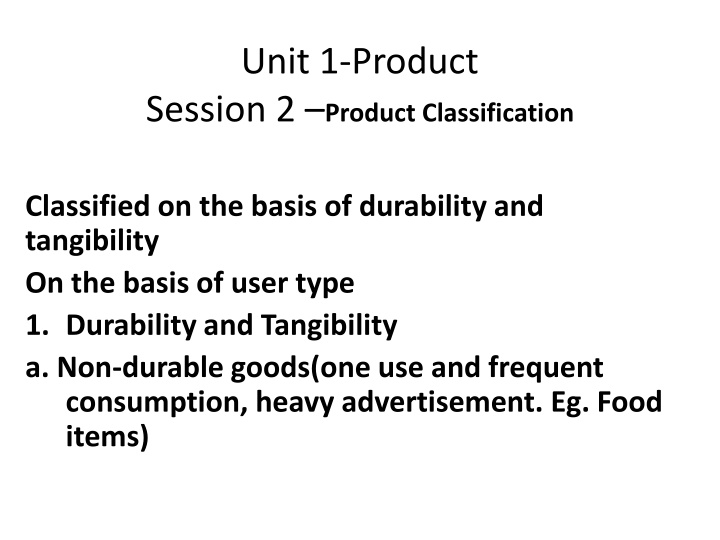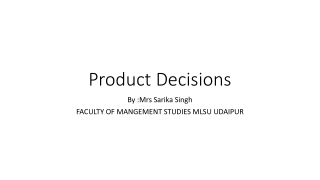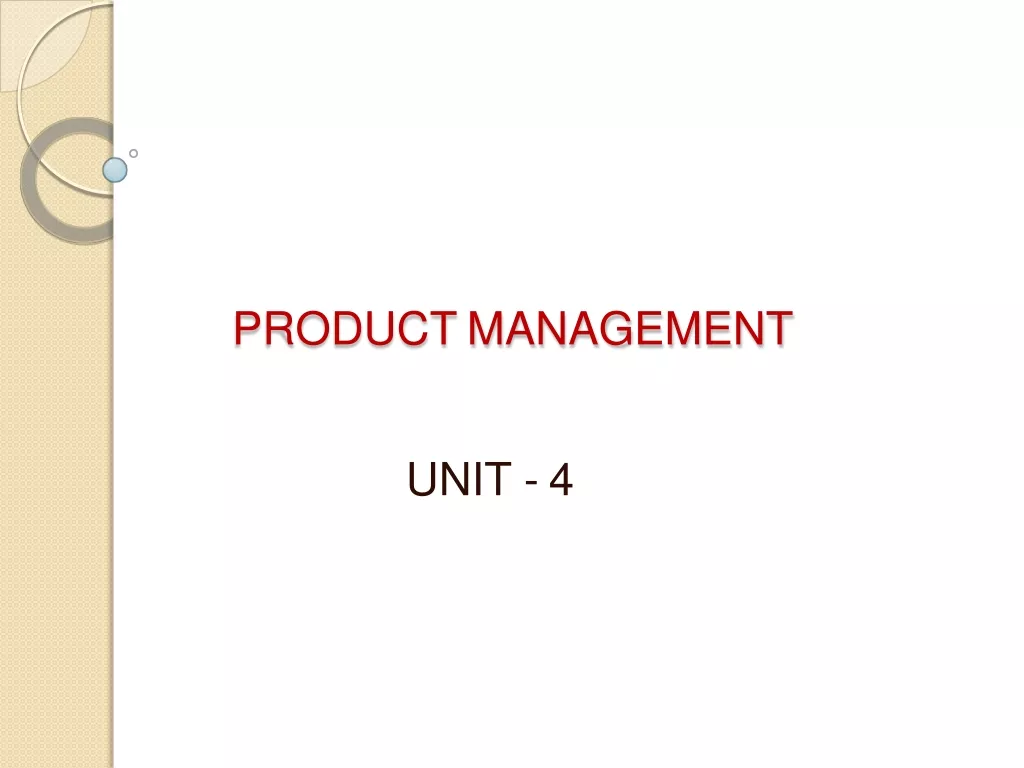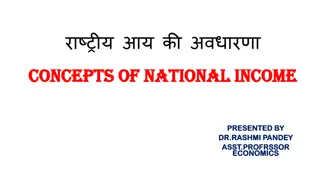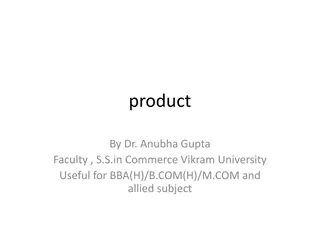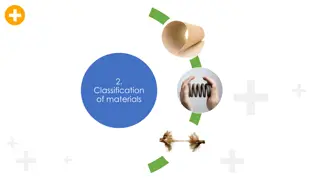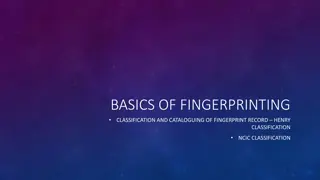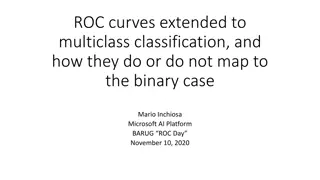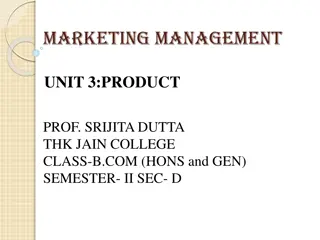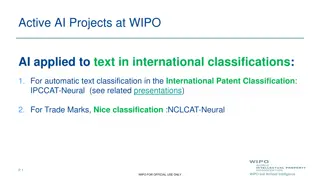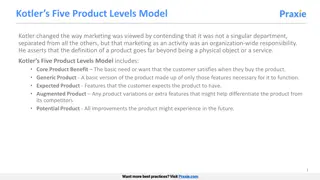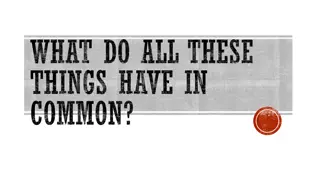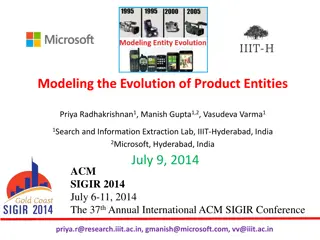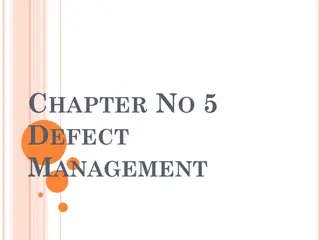Product Classification Based on Durability and Tangibility
This content categorizes products based on durability and tangibility, discussing non-durable goods, durable goods, and services. It further explores consumer goods like convenience products and shopping products, highlighting their characteristics and examples.
Download Presentation

Please find below an Image/Link to download the presentation.
The content on the website is provided AS IS for your information and personal use only. It may not be sold, licensed, or shared on other websites without obtaining consent from the author.If you encounter any issues during the download, it is possible that the publisher has removed the file from their server.
You are allowed to download the files provided on this website for personal or commercial use, subject to the condition that they are used lawfully. All files are the property of their respective owners.
The content on the website is provided AS IS for your information and personal use only. It may not be sold, licensed, or shared on other websites without obtaining consent from the author.
E N D
Presentation Transcript
Unit 1-Product Session 2 Product Classification Classified on the basis of durability and tangibility On the basis of user type 1. Durability and Tangibility a. Non-durable goods(one use and frequent consumption, heavy advertisement. Eg. Food items)
Unit 1-Product Session 2 Product Classification b. Durable goods: (used for many years-need more personal selling. Eg. LCD TV) c. Services: (intangible so needs quality control, credibility of the supplier and adaptability to changing consumption behavior. Examples include hospitality service, airlines services, insurance and banking services.)
Unit 1-Product Session 2 Product Classification 2. Consumer Goods a. Convenience Products(frequent purchases with minimum efforts) Staple Goods (regular basis-bread, milk) Impulse Goods (purchase without planning- chocolates, magazines) Emergency Goods- (fill urgent need-toothbrush at tourist destination)
Unit 1-Product Session 2 Product Classification Main Features of Convenience Goods: i. They are easily available and require minimum time and effort. ii. They are obtainable at low prices. iii. There is a continuous and regular demand for such products. iv. Both demand and competition for these products is high. v. Products are easily substitutable. vi. Heavy advertising and sales promotion schemes help in marketing of these products.
Unit 1-Product Session 2 Product Classification 2. Consumer Goods b. Shopping Products(makes comparison based on quality, size) Homogeneous Goods (alike, price war) Heterogeneous Goods (non standardized- consumer shop on best quality)
Unit 1-Product Session 2 Product Classification Main Features of Shopping Goods: i. They are durable in nature. ii. They have high unit price and profit margin. iii. The customer spends adequate time and compares products before making the final purchase. iv. Purchase of such products is planned prior. v. Important role played by the retailer in the sale of shopping goods
Unit 1-Product Session 2 Product Classification 2. Consumer Goods c. Specialty Products(unique characteristics or brand identification. Eg-high end watches, diamond jewellery)
Unit 1-Product Session 2 Product Classification Main Features of Specialty Goods: i. The demand for such products is relatively infrequent. ii. Products are high priced. iii. Sale of such products is limited to few places. iv. Aggressive promotion is required for such products. v. After sales service is required for these products. Ps-Price-high, Promotion-high advt, Place-exclusive place, Product-Jewellery
Unit 1-Product Session 2 Product Classification 2. Consumer Goods d. Unsought Products(the potential buyers do not know about their existence or there do not want to purchase them) Regularly Unsought Products-(The products which exist but the consumers do not want to purchase them as of now, but might eventually purchase them. Example: Life Insurance Products or Doctor s services). New Unsought Products: The marketers task is to inform target consumers of the existence of the product, stimulate demand and persuade then to buy the product. Example: Oral Polio Vaccine was unsought initially, but heavy promotion and persuasion by the government has lead to eradication of polio.
Unit 1-Product Session 2 Product Classification MARKETING STRATEGY OF UNSOUGHT GOODS: (a) Price: It varies from product to product. (b) Promotion: Personal selling and aggressive advertising by producer and seller. (c) Place: It depends upon the product. (d) Product: Life insurance, Red Cross Blood Donations, etc
Unit 1-Product Session 2 Product Classification What is convenience product for one person may be a shopping product for another. Explain with the help of examples. Convenience Products: Convenience Products are the products that a customer purchases frequently with minimum efforts & time to make a buying decision. Examples: Soft drinks, Milk, Soap etc. Shopping Products: Shopping Products are products where the customer while selecting the products for purchase make due comparison on the basis of quality, price, style and suitability. Examples: Television, wrist watch, washing machine etc. When a customer while purchasing convenience products makes more efforts and spends more time to make a buying decision, it becomes a shopping product for him. On the other hand, when a customer does not make comparison on the basis of quality, price, style & suitability and does not spent much efforts & time in buying a shopping product it become a convenience product for him. For example vegetable, fruits etc. bought by making a special effort by a consumer will become shopping products for him. Similarly wrist watch or TV bought out of impulse will become convieniene products.
Unit 1-Product Session 2 Product Classification Explain the different types of consumer products. (2018-19)
Unit 1-Product Session 2 Product Classification 3. Industrial Goods- The Products used as inputs to produce consumer products are known as industrial products. Features- Limited number of buyers Short channel Concentrated demand Conditional purchase(based on technical specification) Reciprocal buying(rm purchased fg sold) Leasing out products
Unit 1-Product Session 2 Product Classification Types of Industrial Products 1. Material and Parts a. Raw Material Agri based products(sugar cane, rubber-renewable) Natural Products (iron ore, petroleum-limited) b. Manufactured materials and parts Component materials(glass iron) Components (battery, bulbs)
Unit 1-Product Session 2 Product Classification Types of Industrial Products 2. Capital Items (goods used in producing FG) a. Installations Lifts, mainframe computers b. Equipments Handtools Office equipments(personal computers, laptops)
Unit 1-Product Session 2 Product Classification Types of Industrial Products 2. Supplies and Business services (goods required for managing FG) a. Maintenance and repair items Painting, nails b. Operating supplies Writing paper, lubricants c. Business Services a. Maintenance services (copier repair, glass cleaning) b. Business advisory services (consultancy, advertising agent) What are industrial products ? Give examples of any three types of industrial products.
Unit 1-Product Session 3 Managing Product Life Cycle Four Stages: 1. Introduction Stage 2. Growth Stage 3. Maturity Stage 4. Decline
Unit 1-Product Session 3 Managing Product Life Cycle Adjustments are made in marketing mix of a product in its life cycle PLC is applied to product category, product form and product brand. Short for brand and long for category PLS for product forms go through all stages
Unit 1-Product Session 3 Managing Product Life Cycle 1. Introduction Stage: Introduction of new product Eg, Allout 1990
Unit 1-Product Session 3 Managing Product Life Cycle It is characterized by Inducing acceptance and attaining initial distribution. High operational costs, arising out of inefficient production levels or bottlenecks, high learning time, unwillingness of the trade to deal in the product, demand of higher margins or extended credit terms. High promotion costs on the expectation of future profits. Customers have low awareness and those who are willing to try the product do so in small quantities called trial purchase. Competition is limited to few firms, and is from indirect or substitute products. Negative profits on account of low sales volume, Distribution is limited and promotional expenses are high.
Unit 1-Product Session 3 Managing Product Life Cycle MARKETING STRATEGIES IN INTRODUCTION STAGE 1. Products are promoted to create awareness and also develop market for the product. 2. The pricing of the product may be low to increase penetration and expand the market share or high priced to recover the development costs. 3. Distribution can be selective till consumers show acceptance of the product. 4. Marketing communication seeks to educate and enhance the product awareness
